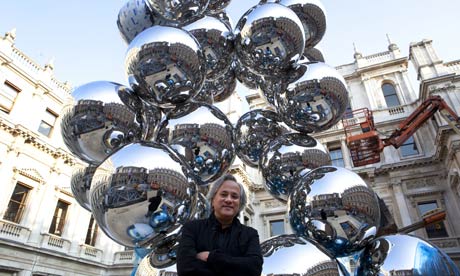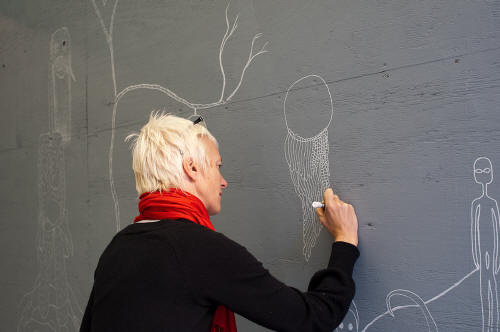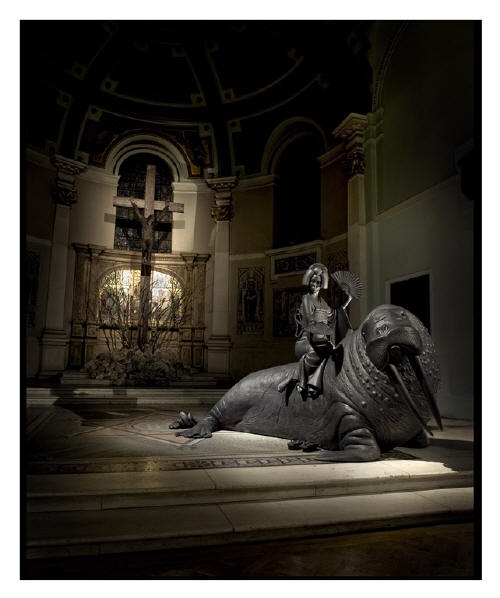|
|
| home | features | exhibitions | interviews | profiles | webprojects | gazetteer | links | archive | forum |
|
Notes from London
Art Week 2009
Joseph Clark
A visit to London Art Week seldom leaves time to fully immerse yourself in the work that you see. My few days' visit inevitably started with the opening of Frieze. This year it felt particularly commercial, and, I have to say, pedestrian. I didn’t take much away from it - other than a mild hangover. The veneer felt thin, complementing many of the exhibits beautifully. There are always interesting things to see at Frieze, but I tend to leave perplexed as to why they are overshadowed by a deluge of unimportant, banal mediocrity. But then I remind myself: it's a commercial fair like any other. It's more about the market than it is about art.
Then I'm over to White Cube at Mason's Yard to see the Anselm Kiefer. This was less powerful, for me, than other Kiefer shows. He's undeniably a great artist, but this felt distinctly de-caff. Round the corner, I popped in to Beaux Arts. Good exhibition of the ever energetic John Hoyland. I was kindly given a copy of the hardback book to accompany the show: ‘Scatter the Devils’ - a great title! I had meetings near Vyner Street, so did the rounds. The most memorable bit was a visit to a new gallery across the road, called ‘The Last Tuesday Society’. Silas Wynd ('just call me Wynd'), artist and main man at the Last Tuesday Society (famed for their masked hedonistic balls), has opened this gallery-come-shop of weird, wonderful and terrifying curiosities. It was great and I could have spent a long time there.
Back to Zoo, in its new location just off Shoreditch High Street. It was no better than an average student show, and worse than many. A real disappointment, and a waste of time that could have spent looking at something else. Then to the opening of an exhibition of older works by the great Michael Sandle, held at a small, established gallery near Islington called Art Space, run by Michael Richardson. A quality dealer – overshadowed in the current PR world, I am sure, by many of the Zoo and East End younger counterparts. Could not help but ponder on this. Great work shown in a modest way by a dealer who has been supporting work he believes in for over 20 years. Seems important.
One show that I missed was ‘The Sacred Made Real’ at the National Gallery, an exhibition of Spanish art from 1600 – 1700. ‘The Age of the Marvellous’, for me, had the same power as the art of this period – it also took the sacred and made it real, and made connections with the timeless nature of art. This came as a welcome surprise, after having been bombarded with so much contemporary work, which quickly becomes forgotten in the temporary concerns of the present. Thankfully, this show was far from forgettable.
Joseph Clark is Director of Millennium Gallery, St Ives. |
|
|

 Next
day I'm at Anish Kapoor at the RA: a razzmatazz retrospective showing
the greatest hits, and you can't help but be impressed (Kapoor
picture right). Having said that, the spirituality of Kapoor’s
work seemed largely to have been replaced by ostentatiousness. A
number of the sculptures were diluted repeats of previous pieces and
as such felt a little devalued. But they were impressive none the
less.
Next
day I'm at Anish Kapoor at the RA: a razzmatazz retrospective showing
the greatest hits, and you can't help but be impressed (Kapoor
picture right). Having said that, the spirituality of Kapoor’s
work seemed largely to have been replaced by ostentatiousness. A
number of the sculptures were diluted repeats of previous pieces and
as such felt a little devalued. But they were impressive none the
less. 
